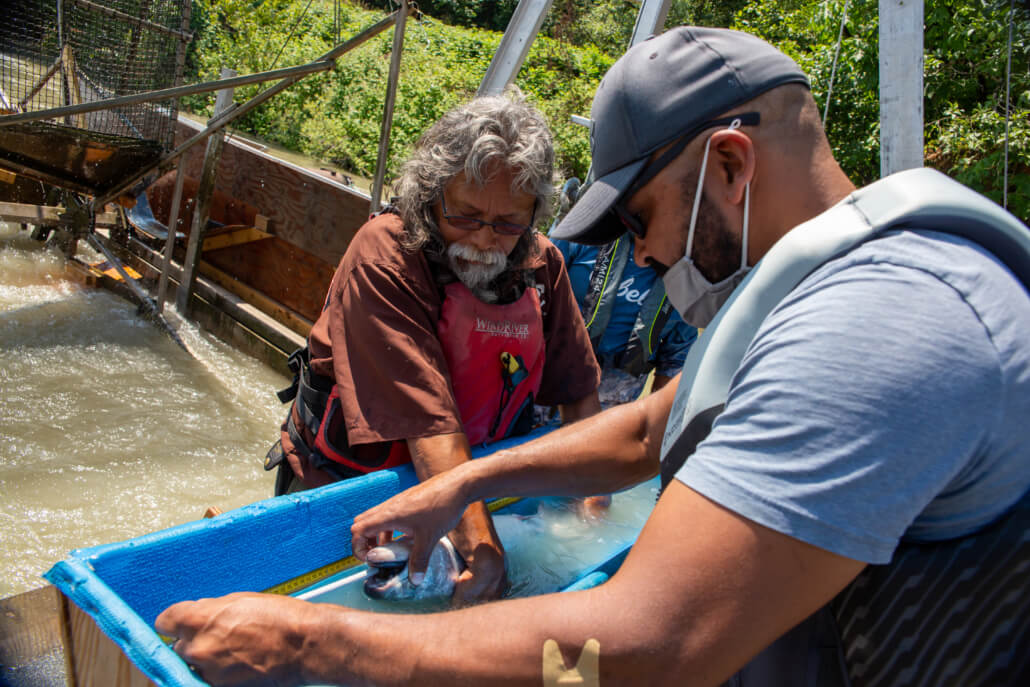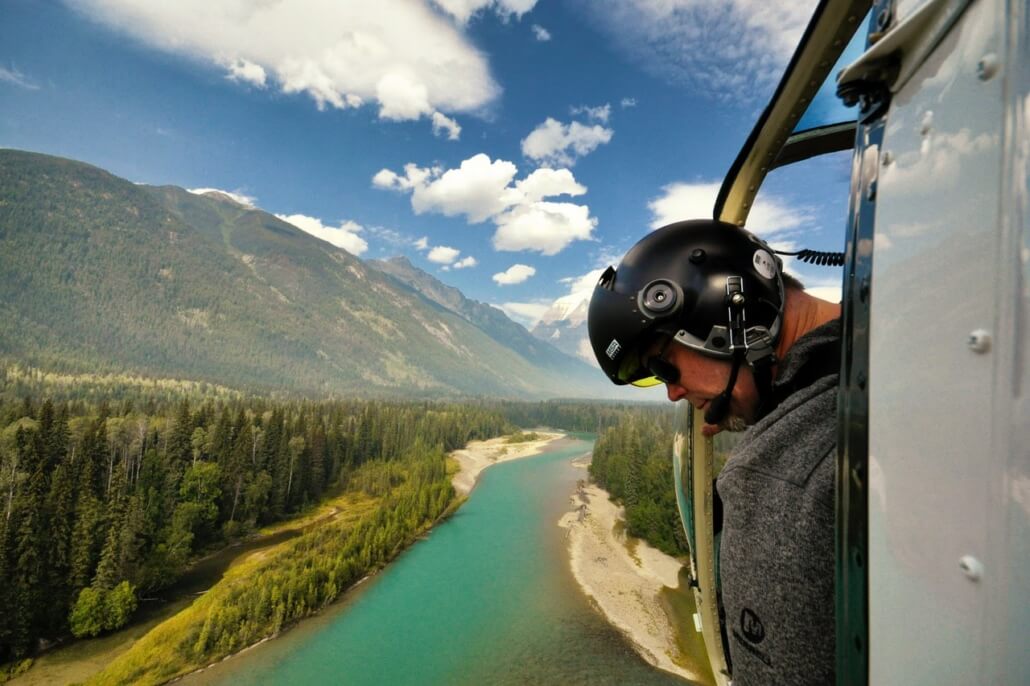Changing with the Climes
With a $3.2-million government grant, PSF launches a three-pronged program to help B.C. salmon survive an increasingly volatile environment
Salmon have adapted over thousands of years to natural conditions in our region, but those conditions are rapidly evolving due to climate change. Also, many freshwater ecosystems are already exposed to human-caused stressors. This is particularly true in the Fraser River. The Fraser is the second-largest salmon river in the world, and near its shores reside 80 per cent of B.C.’s human population.
“Climate change impacts are already causing temperatures to rise and river flows to fluctuate outside of natural ranges,” says Jason Hwang, VP, Salmon, at the Pacific Salmon Foundation. “Increased heat means less snow and more annual rainfall. This means more flooding and storm conditions that sweep sediment into rivers, choking eggs and tearing plant cover from banks. It also increases the frequency and severity of drought, which creates low water and high temperature challenges for salmon.”
To put all this into perspective, Hwang adds, “When flows are high in the Fraser River, salmon use a lot of energy trying to migrate. As temperatures rise, this adds to the problem, as warmer water holds less oxygen and creates stress for returning salmon. This can result in significant mortality of large numbers of salmon. To give our salmon the best chance possible, we need to minimize other stressors, and do what we can to reduce impediments that make migration more difficult.”
Thanks to a $3.2-million grant from the joint provincial and federal B.C. Salmon Restoration and Innovation Fund, PSF’s Climate Adaptation Program launched this summer. Activities will complement our climate change focused research and work in the marine environment and open ocean.

Eddie Julian, Matsqui First Nation, and Shane Thompson, LGL, insert a radio tag into a Chinook at the Matsqui fish wheel in Mission.
The program prioritizes urgent action in three key areas to help salmon adapt to climate change:
1. Assessing Fraser River migration impediments focused on the Fraser Canyon. When salmon return to the river from the ocean, they stop eating and rely on stored fat for energy to migrate up the Fraser to natal spawning streams. High flows in the Fraser require more energy and more time to reach spawning grounds. Many salmon don’t have the reserves to make it, and die en-route.
For example, in 2020, high flows in the Fraser led to salmon not showing up at Big Bar for the first four to six weeks of migration. This indicated that they were being held up by flow conditions at locations other than Big Bar. PSF aims to assess for potential migration impediments and areas that can be improved, including existing fishways. One activity that started this summer engaged the Matsqui and Yale First Nations in tagging salmon to track their migration patterns. The goal is to identify areas slowing down migration and solutions to support successful journeys to spawning grounds.
2. Developing a “playbook” to guide landscape recovery strategies and priorities for salmon in the wake of major fires. Landscape fallout from wildfires – like burnt trees – is easy to see. However, wildfires can also lead to major changes in our rivers and streams. Wildfires cause increased runoff and flooding, which sends sediment and debris into the water. These materials can kill salmon and their eggs, and destroy and smother habitat. In B.C., there is no established strategy that considers the needs of salmon and aquatic ecosystems following large wildfires. A fire recovery playbook will help the forest industry, government agencies, First Nations and conservation organizations identify wildfire-related impacts and risks to salmon and their habitat; they can then compile strategies to reduce impacts and accelerate watershed recovery.
3. Developing improved genetic baselines to understand differences at a scale finer than Conservation Units. A Conservation Unit is a population of salmon that are genetically related. In some cases, a Conservation Unit is just one stream, but in other cases it can include a number of them. Salmon have evolved over thousands of years to be ideally suited to conditions in their home streams and ecosystems.
It is important to understand and protect the diversity of salmon populations – because if we lose it we can’t get it back. Scientists have developed a deep enough understanding of salmon populations to group them within relevant Conservation Units. However, there could be genetic adaptations within each unit that will prove vital for future adaptation and survival. For example, salmon within a Conservation Unit may have genetics that prompt them to return earlier, and be more resilient to high temperatures. PSF’s program will identify those key adaptations that could help salmon better adjust to climate change, and which could be conserved through measures like hatchery enhancement or habitat restoration.
THE VIEW FROM THE UPPER FRASER

The Pacific Salmon Foundation recently hosted more than 150 scientists and stewards through a virtual workshop focused on sharing ideas to help salmon adapt to climate change. Gord Sterritt is a new board member for PSF and the executive director of the Upper Fraser Fisheries Conservation Alliance, a collaborative stewardship body for First Nations in the region. Gord presented on the disproportionate impact of climate change on Upper Fraser First Nations who rely on salmon as a food source:
“There are numerous Chinook and Sockeye salmon populations in the Upper Fraser that have been identified by COSEWIC [Committee on the Status of Endangered Wildlife in Canada] as endangered . . . With these declines come increased health issues and food security issues. Believe it or not, not everyone has the luxury of going to the local grocery store to meet their needs. Community leadership has been forced to impose restrictions, often founded by traditional laws and necessity, on their people, in order to preserve the biodiversity of salmon species and stocks that return to the respective territories for future generations.”
WATCH: Gord Sterritt shares the impact of climate change and declining salmon stocks on Upper Fraser First Nations


